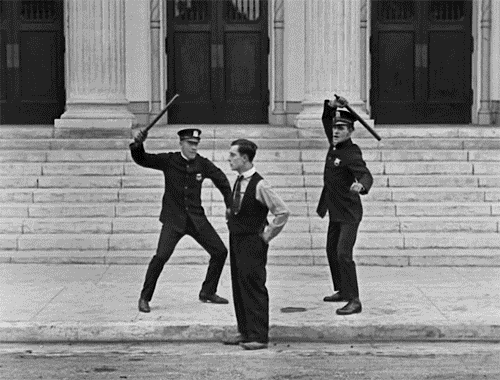
Realism
- A level of authenticity is achieved through the background activity that can be seen in each shot. In a lot of the shots In this film, cars can be seen driving past in the background as well as people walking around the streets. The presentation of everyday lives taking place parallel to the events we are focusing on highlights the idea that the film exists in a reality of sorts.
- Multiple aspects of the lives of 1920s American citizens are presented in this film. One man who appears to be unemployed and struggling to earn money tricks Keaton into giving him money; not only does this highlight the rising levels of unemployment in the 1920s, it also hints at the corruption of the contemporary society. Similarly, Keaton’s character appears to be on a quest to become a businessman in order to win the heart of a woman in a higher class than him, the prospects of social mobility that are presented reflect the growing ideals of economic prosperity in the 1920s and the American Dream of becoming successful.
- The parade that is showcased in the film is made more realistic by the masses of crowds surrounding the marching soldiers. The extreme scale of the event presents it as a more public and therefore authentic setting. It also portrays the patriotic values of America.

Expressionism
- On a couple of occasions during this film, Keaton uses a fade to black to show the passage of time; this is used when we see the man begin to pile furniture onto the cart before the screen fades to black only to open again to a shot showing the cart completely full. The technique is used to avoid the audience becoming bored but even so is expressionistic as we are not given an authentic display of time passing and instead uses editing to develop this understanding in the audience.
- A running joke throughout this film is the chase between the cops and Keaton and it is noticeable that the incompetence of the officers is exaggerated for humorous effects. In multiple scenes the cops seem to fall over each other, in one scene two officers hit each other accidentally instead of hitting Keaton and in another he outsmarts masses of cops by hiding inside of a building causing them to run straight past him and each other.
- One aspect of expressionism that differs to realism is the use of editing for effects, in Cops the frequency of the edits increases as the chase sequence progresses in order to increase the pace of the events. Editing is specifically used to encourage a specific response from the audience.










